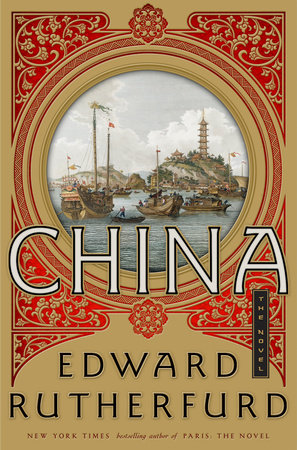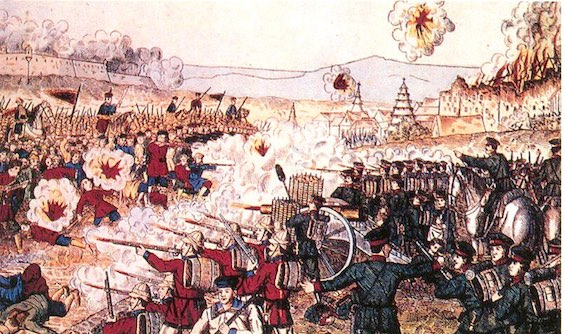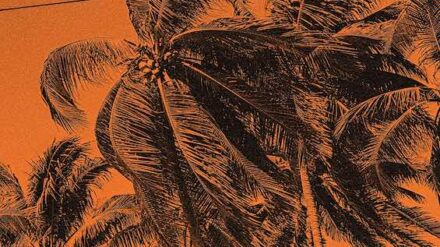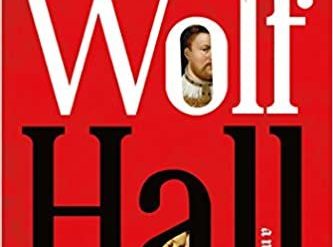
The roots of the Chinese Communist Revolution lie in the 19th century. The Opium Wars, the Taiping Rebellion, the Boxer Rebellion—these three blood-soaked events set the stage for the dissolution of the Chinese Empire in 1912. The chaos of one century led to a new sequence of chaotic episodes in the next. The brief republican government that succeeded the Empire paved the way in turn to the Chinese Civil War and ultimately to the establishment of the People’s Republic of China in 1949. English novelist Edward Rutherfurd, the acclaimed author of Sarum, Russka, London, and other historical novels, tells the tale of those three 19th-century events in his engaging and highly readable Chinese historical novel. It’s entitled simply China.
Estimated reading time: 7 minutes
A masterful storyteller
Rutherfurd is an accomplished storyteller. The sheer scope of the events he describes, and the passage of more than six decades, would present any novelist with a daunting challenge. Confining all that action to fewer than a thousand pages, and doing so in a way that makes for compelling reading, would defeat all but a handful of writers. But Rutherfurd manages it with aplomb. By following the trajectory of a handful of individuals who become embroiled in each of these historic events, he brings the tale down to human scale. Hundreds of thousands of individuals were involved in these tragic episodes in Chinese history. We learn about them as though having an intimate chat with friends.
China by Edward Rutherfurd (2020) 872 pages ★★★★★

The First Opium War
The novel opens in January 1839 near Canton (today’s Guangzhou) in southern China, where foreign traders, principally British and American, are reaping immense fortunes selling opium to the Chinese. Rutherfurd draws our attention to a young British man named (conveniently) John Trader, his friend Charlie Farley, and the Odstock brothers who own the opium trading firm Trader buys into.
The Emperor has assigned a senior mandarin named Lin to put a stop to the trade, which has led to the addiction of hundreds of thousands of his subjects. Lin travels to Canton with his aide, Shi-Rong. They are successful in forcing the foreign traders to dump bundles of opium into the sea worth the equivalent in today’s currency tens or hundreds of millions of dollars. But their efforts lead the British to send in the Royal Navy. Its superior technology, including an ironclad warship, overwhelms the Chinese defenses and forces the Emperor to sign a treaty granting them the island of Hong Kong and access to several other ports.
The Second Opium War
The First Opium War lasted for three years, from 1839 to 1842. It’s the focus of Rutherfurd’s treatment of the conflict. But war erupts once again in the following decade with the Second Opium War (1856-60). This time, the British and their allies—Japanese, Americans, French, Germans, and others—attack Beijing in force. They take control of the Forbidden City and destroy the elegant Summer Palace north of Beijing.
In the course of this action, we meet another of the novel’s principal characters: a young palace eunuch who gives us a front-row seat on the royal family and the thousands of eunuchs who surround them. The young man, only recently “chopped” to gain entrance to the palace, has a wife and children, unlike most eunuchs. Through a fortuitous accident, he secures an opportunity to repair the fingernails of the woman who will eventually become the Dowager Empress Cixi, the last ruler of the Qing Dynasty. She gives him the name Lacquer Nail.
The Taiping Rebellion
For nearly 15 years beginning in 1850, a mad, charismatic Hakka man named Hong Xiuquan wreaks havoc throughout northern China. Hong had declared himself the brother of Jesus Christ and led what ultimately became an estimated 30 million followers on a quest to establish the Heavenly Kingdom in China. The Taipings waged what ultimately became the bloodiest civil war in world history. The total number of dead is estimated at between 20 and 30 million people. (I have seen much higher estimates.) We follow the action in Rutherfurd’s book through the eyes of Shi-Rong, now a rising mandarin official, and through Nio, a Hakka pirate-turned-soldier who rises to high rank among the Taipings.
The Boxer Rebellion
The internal peace reigning for decades since the defeat of the Taipings in 1864 is shattered in 1899 when ultranationalists rise up to oust all foreigners from the empire. They are xenophobic and anti-Christian. For nearly two years, the so-called Boxers rampage through northern China, making their way ever closer to the imperial capital, Beijing. They lay siege to the city, forcing foreign businessmen, diplomats, and missionaries to crowd into defensive positions in segregated neighborhoods near the Forbidden City.
As scores die behind the barricades, the Boxers are on the verge of breaking through the lines and massacring every foreigner and Christian in the city. In the final months of their rebellion, the Empress Dowager Cixi throws in her lot with the Boxers. The addition of imperial troops to their ragged army almost turns the tide. But help arrives in the nick of time when the foreign powers dispatch troops from the coast. We follow all this action from within the palace through the reminiscences of Lacquer Nail, who is now one of the Empress Dowager’s most trusted confidantes. Among the foreigners, we have the perspective of John Trader. Now nearing 90, Trader has returned to China from Scotland to visit (and, he hopes, rescue) his daughter, who has married an Anglican missionary.
A Chinese historical novel that brings history to life
All this may sound jumbled in the sketchy summary above, but it works well in the novel. We come to know and appreciate each of Rutherfurd’s principal characters. And through them we learn not just China’s history in the 19th century but its cultural practices, its religious faiths, its military capabilities, and the politics swirling around the emperor in the Forbidden City. The history is accurate—with some characters fictional but other, key figures known to historians. Rutherfurd is, above all, a consummate researcher.
About the author

Edward Rutherfurd is the pen name for Francis Edward Wintle. He was born in Salisbury, England in 1948. China is the ninth of his nine epic historical novels. They’re all set in particular places and span long periods of history. All were international bestsellers. The first, Sarum, a novel about England, was published in 1987. Previously, Rutherfurd worked in political research, bookselling, and publishing. He attended the University of Cambridge and Stanford Business School.
For related reading
I’ve also reviewed two of the author’s other historical novels:
- New York: The Novel (An epic historical novel about New York City)
- Russka (A journey through Russian history in fiction)
I’ve also reviewed the three books of the Ibis Trilogy by the Indian writer Amitav Ghosh. The books brilliantly dramatize the story of the First Opium War, one of Rutherfurd’s primary topics in China:
- Sea of Poppies (A superb historical novel about the opium trade)
- River of Smoke (A brilliant Indian novel about the First Opium War)
- Flood of Fire (An outstanding Indian novelist looks at the Opium War)
You might also check out 30 insightful books about China and especially:
- China in World History by Paul S. Ropp (Chinese history in less than 200 pages)
- The Incarnations by Susan Barker (A brilliant novel that spans a thousand years of Chinese history)
- The Beautiful Country and the Middle Kingdom: America and China, 1776 to the Present by John Pomfret (A revealing history of U.S.-China relations)
You might also be interested in 20 most enlightening historical novels.
And you can always find my most popular reviews, and the most recent ones, on the Home Page.


























